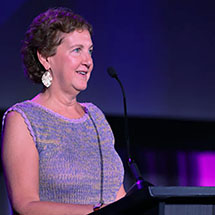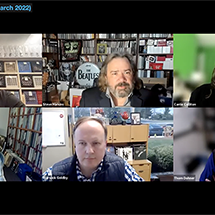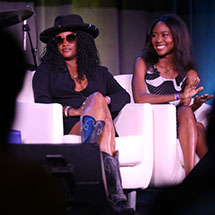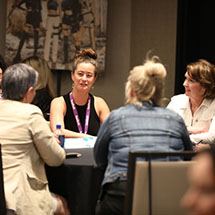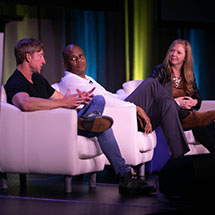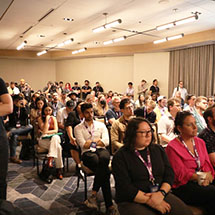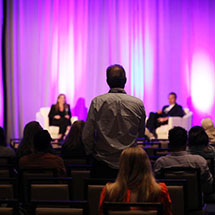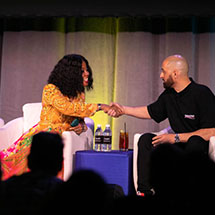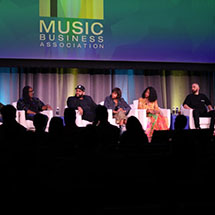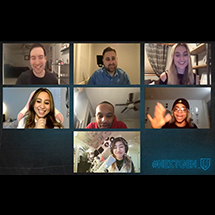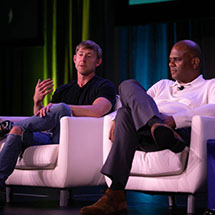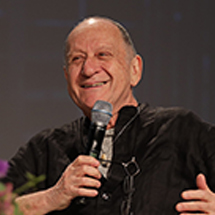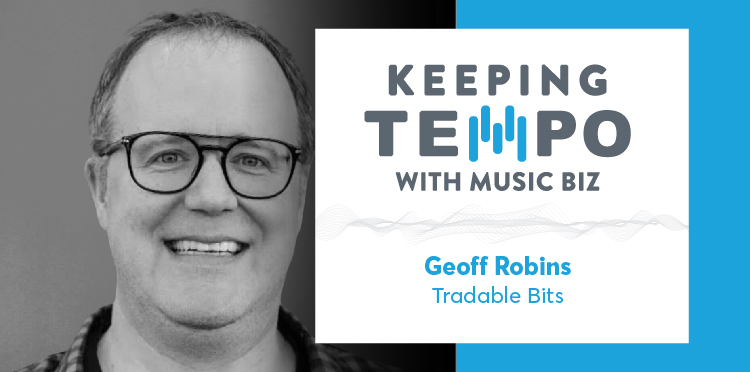
[Keeping Tempo With Music Biz] — Modernizing Music Marketing In 2024: An Interview with Geoff Robins of Tradable Bits

Music marketing is incredibly complex and ripe with challenges. Just connecting a throughline can be a cumbersome chore for marketers who typically coordinate across multiple entities (labels, promoters, artists, sponsors, etc.) To streamline this process and help marketers really understand the fanbases they’re dealing with, Tradable Bits has developed an all-in-one ecosystem to manage every aspect of companies’ fan-marketing efforts. This month, we talked to Geoff Robins of Tradable Bits about the company’s background, its proven offerings for the music & live events spaces, adapting marketing tactics to meet the needs of new tech & consumer regulations, and the future of where music marketing is headed!
Music Biz: Tradable Bits was founded by an engineer and a mathematician with extraordinary careers outside of live music. Could you give our readers some background on the founders’ journeys and what led them to the music and live events space? How do their backgrounds provide the company with a competitive edge?
Creating shared moments was a lifelong vision of Tradable Bits’ co-founder and CEO Darshan Kaler. Early in his career, Kaler was building communications infrastructure at Bell and then uniting billions worldwide to watch the 2010 Olympics. He is driven by a passion for how technology can connect people around collective experiences, which led to him founding Tradable Bits.
Kaler’s co-founder and CTO Dmitry Khrisanov is a database architect with a masters in mathematics and is a legendary developer who spends his spare time coding and designing back-end systems. His past is a trail of high-tech enterprise companies working as the Technical Architect with Accenture, BC Hydro and Fortis. He even built the database structure for ThinkorSwim, one of the most complex applications you’ll ever see.
Khrisanov’s tenacity combines seamlessly with Kaler’s passion and together they are the powerhouse fueling radical innovation in fan engagement technology at Tradable Bits. They have surrounded themselves with some of the best executives in the music and sports industry, who ensure the products from Tradable Bits meet and exceed the unique needs of the industries the company serves.
Begin Interview with Geoff Robins, VP, Tradable Bits:
Music Biz: Thank you for taking the time to speak with us, Geoff — can you start by outlining where fan engagement marketing sits within the music marketing ecosystem, and who most commonly drives these campaigns?
Geoff Robins: This is an interesting question because “fan engagement marketing” is an easy way for music marketers to create a throughline that connects different departments in the marketing ecosystem, and we consider inputs from the various marketing sub-disciplines during our planning process. So we talk through content marketing, direct-to-consumer marketing, brand, and so forth to define the overall goals, which may include reach, impressions, lead generation, progressive prospecting, data and more.
Where we come in is creating that throughline. Let’s say you want to increase community involvement with your next festival. The implementation of that type of throughline might be daunting because it can include a multitude of tasks (custom campaigns, distribution across socials, motivating fans to a particular action, etc.) Pulling all these elements together requires a multifaceted tool or code, and that’s Tradable Bits’ area of expertise. In many instances, we start with marketing teams and once the campaign begins delivering results, other groups take notice and want to get involved.
Music Biz: Tell us more about Tradable Bits’ music clients and about how you’re working to meet their needs.
GR: We work with many of the larger music festivals, music associations, labels, management companies and ticketing systems in the music industry. Some of our entertainment partners are AEG Presents, Goldenvoice, BMG, Live Nation Canada, QPrime AF, Sixthman, Front Gate Tickets, Country Music Association, Danny Wimmer Presents, Life is Beautiful andOutside Lands, among many others.
Each partner has a unique need. As an example, many event producers turn to Tradable Bits to help reach fans outside of the three or four days of their event. This may include generating engagement between fans and their brand ahead of the event through tools like our Lineup Predictor, which allows fans to cast votes for what they think a band’s setlist might be or what bands may be included on the festival lineup. The result here is a highly valuable dataset that allows an artist, promoter or festival to potentially shape an “in-real-life” event that delivers on their core fans’ expectations. This type of engagement allows for a bit of a two-way dialogue, a sharing of preferences, and that continuous acquisition of data becomes incredibly valuable over the long term as artists and festivals evolve year over year. It really puts the artist, promoter or festival back in control over their proprietary fan data. It also allows them to begin relationships with different types of fans, from those that are ticket purchasers and attend, to wider music lovers in their segment of the market.
Then, we have partners who are focused on making their marketing funnel more efficient. This entails things like prospecting, identifying and reaching fans that are most likely to buy a ticket to the event. In cases like this, we have many tools to offer, including campaigns that act more efficiently than prospecting ads. For example, “win-before-you-buys” or RSVPs, which are types of contests that allow the partner to capture critical information about the fans who are interested in the festival, but who have yet to purchase tickets. Coupled with direct-to-fan opt-ins and the data that we pull in from our integrations across ticketing, merch & more, you can begin to create both a taxonomy of these fans and engagement opportunities uniquely suited to pushing them down your funnel. Many of our partners also work with our digital ads team to pair this engagement with their paid strategy. Short-term over the festival season, this often means more efficient marketing dollars and higher ROI, and long-term you begin to separate out the super fans and how to reach their networks.
Music Biz: What are some tactical tools Tradable Bits offers to promoters, labels, artists, or even sponsors?
GR: We’ve developed a suite of tools to help artists, promoters, labels and sponsors acquire, analyze and activate their fan data, all centered around the fan.
The greatest need of many artists, promoters, festivals and labels starts with the centralization of their data and the dismantling of the data silos they face across platforms and CSV files. We do this two main ways. One, through strategic integrations, including integrations with ticketing and merch platforms. And two, through our suite of digital engagements that allow our partners to acquire zero-party data (more on that later) directly from their fans, thus getting their social media audience into their own databases. Most of these digital engagements are very flexible and tactical marketing tools for promoters, artists or sponsors, and might include things like RSVPs, enter-to-win contests, ticket upgrades, gated livestreams, pre-saves, lineup predictors, and more. For on-the-ground events, we also have a large video tower, which serves as a sort of beacon for fan engagement and on-the-ground announcements and activations.
Then, with all of this data unlocked, clean and centralized, we have a suite of tools for advertising and data activation. We offer the ability to segment and push audiences over to social ad platforms like Meta with one click, we can track offline conversions, and we also have a centralized reporting dashboard where you can view cross-channel performance. Many of our partners also opt to work with our in-house digital ads team to optimize their targeting and ads strategy.
This is all very technical talk, and it goes to show how complex it is to create something that ultimately is very simple, fun and exciting to the fan.
Music Biz: So much of what Tradable Bits’ work in music engaging with fans who attend concerts and festivals on behalf of promoters. Can you share with our readers a bit about the taxonomy of a music fan?
GR: This is a great question, and it’s the one everyone wants an answer to. There’s no singular answer here. As it turns out, music fans are nearly as complex as data science itself. We work with our partners to help them understand their whole fan base under one roof, the unique characteristics of who buys, when, and how often. And with this, you then start to be able to name and acknowledge each group based on what your customers are actually telling you versus you assuming you know.
More broadly there are different “categories” of fans. For example, there are those who consume everything you put out, those who are the “tag-along-friend,” and those who are more distanced. The key is to put names to the categories in the context of your own fanbase. This means you have to know which questions to ask, and then start building data around it. For example, if you want to know how many fans are “tag-along-friends” in your fanbase, you might push out something like a “ticket-registration” campaign, or compelling incentives on-site at your event to start acquiring the data of these more “hidden” fans and cross reference that against your ticketing information. Or, if you have 1,000 core Metal fans who attend five of your events, you can look at similarities amongst these fans when it comes to their journey and buy-in, then move to get to 1,001 Metal fans who attend all five events. We help our partners answer questions like ‘What sorts of engagement tactics can be applied to help motivate your fans?’ and ‘How do I fill out my data set?’
Music Biz: A recent trend in music marketing has been that of engaging “super fan” communities — those folks who support their favorite artists by going above and beyond actions like streaming their newest release or buying tickets to a live show. From your perspective, what makes a super fan — in the context of “Nature vs. Nurture,” are they born or are they made?
GR: With meaningful engagement, I truly believe a casual fan can be compelled to become a super fan — not all of them, but many of them. Understanding the journey of a super fan will allow an artist, promoter, label or festival to create an opportunity for a casual fan to migrate up to an established fan, to then become a super fan. The relationship between an artist and a fan is just that: a relationship, one that requires interaction, effort and consistency. The benefit of any data-collecting stakeholders is the access to data. That data informs about that particular, individual fan. Do they want to engage? How frequently do they prefer communication? How do they like to be communicated with – is it with an email? A text? A QR code? What motivates them to action – is it a contest, a chance to win a VIP experience, free or discounted merchandise, the opportunity to influence the lineup? Once you truly understand the fan, you can then grow the relationship. And like any relationship, the more effort you put in, the more you get out, at least in most instances. So we truly believe that you can promote many casual fans to super fans. We know more than a few of the secret ingredients that go into making a super fan. We have been identifying the super fan for years through our collection of data sources and building one true fan view. We distill that data to empower our partners with their own understanding of who their super fan is through the collection of their data.
Music Biz: Recent regulation and voluntary oversight by social media companies has restricted, if not outright eliminated, the sorts of data points promoters, labels and artists typically receive from third-party sources. This has resulted in a terrific opportunity for Tradable Bits in the form of “zero-party data” — can you discuss what this is and how it differs from first-party data?
GR: The difference between first- and zero-party data is that zero-party data refers to information that you acquire directly from your fans, through the use of things like surveys, reviews. It’s a great way to uncover personal preference. Fans understand that information is being collected and they consent to sharing it because they know it will mean a better festival or concert experience.
First-party data on the other hand is any data collected from your audience through properties you have some ownership over, but they are more implicit. First-party data is basically the things that fans opt-in to sharing at some point in their journey. For example, if they purchase tickets, they’re agreeing to the ticketing companies’ terms and conditions. First-party data may come from a website that includes pixel tracking, website clicks, downloads. This is something that the fan controls when they select their cookie preferences.
Music fans, and sports fans too for that matter, understand the benefits of opting in and overwhelmingly crave that customized experience. This is particularly true of younger, more tech savvy fans who have only ever known a life of Google, Facebook, Instagram, TikTok, Snapchat, and such. The data is anonymized, meaning it is grouped with other like-minded fans to produce a tailored experience for a particular group of fans defined by common characteristics or patterns of engagement. The reason these types of data are becoming increasingly important to capture in 2024 is because, as you said, both regulation and consumer expectations are changing. In short, a lot of the rich data that marketers previously had access to through social media is dwindling. Organizations that are reliant exclusively on third-party data provided by social entities to reach their fans are in a risky position today. They’re just falling behind as companies invest more resources in their owned channels, their fan databases, and consent-first behavior that their fans appreciate and have adapted to. Tradable Bits has been focused on first- and zero-party data for nearly 10 years now, and has always had a philosophy of fan-first marketing. Knowing who your champions really are in the context of your business, and then finding fans like them to grow.
We’d definitely encourage clients to start collecting and growing this data today in whatever ways make the most sense for their audience & marketing needs. You can start with something as simple as a fan list or fan club. Beyond targeting and adaptability, the value of this data is that it compounds over time, and it’s proprietary data about your fans.
Music Biz: What are some of the biggest challenges Tradable Bits is working to resolve in the short-term, particularly as we approach the summer festival season?
GR: We’re seeing a couple of trends this year. First is around attribution and better reporting when it comes to festivals’ paid strategies. Pixels are deteriorating, by which I mean, those tracking pixels that collect data on user behavior are intentionally providing less information to marketers — this is by intent and mostly due to consumer privacy & tracking concerns. Without those high-quality pixels, there will be an increase in inaccurate data and a decline in the reliability of marketing analytics. Given this, we’ve been working with our festival partners to ensure that they have a solid offline conversion strategy in place, so that they don’t lose this valuable visibility into their fanbases. This sounds simple but it’s actually an incredibly complex piece of code developed by our in-house data architects that allows various databases to sync and provide meaningful identification markers about fans. This is critical because if a festival loses that visibility, they lose the ability to effectively strategize their advertising and marketing.
Second, we’re working to incorporate more fan engagement and “fun” data collection into each festivals’ promotional cycle so they are more effectively drawing their audience off of social media to actively & directly engage with their fans. This then becomes a tool for their brand teams to better position themselves vis-à-vis their competition. Additionally, this method allows festivals to sell directly to high-intent or super fans. In turn, this delivers more bang for the buck to promoters and more passionate audiences.
Third, we’re helping festivals incorporate more on-the-ground experiences during their events. For the last five years, we’ve been on the ground building “Video Towers” as beacons of engagement at festivals, and this is a continued priority for Tradable Bits and our partners this year. We’re also working to ensure that all of the data collection that happens on-site is more centralized, so that fan behavior across the festival is better understood. It’s the nature of the beast that there are many data silos within any organization – and this is true far beyond the music industry – so simply breaking down those data silos is a necessary part in the evolution.
Music Biz: A major benefit to working with Tradable Bits is the ability to reach fan bases at scale. This presents the challenge of reaching fans individually on a meaningful level — so how do you personalize one person’s journey when you have to make connections with tens of thousands of fans at scale?
GR: Segmentation and journeys are key to personalization at scale, and the key ingredient to proper segmentation is data that stakeholders can use to understand their fans. The key to personalization isn’t just things like token tags to say, “Hey [INSERT NAME HERE],” it’s understanding ultimately why they want to engage with your brand and what they hope to experience with you. From here, they can begin understanding those pieces by centralizing data across systems and looking at fans in their entirety. And finally, they can begin to slice and dice different journeys for common types of fans, whether that’s behavioral, geographic, or any other demographics or psychographics.
Music Biz: Tracking offline conversions has been a prominent discussion topic among marketers in all industries. Why is it so important to capture that particular part of the fan journey?
GR: Tracking offline conversions is so important because it’s a key metric of success, or lack thereof. Measurement is what drives so much of marketing. And if you can’t measure it, it may as well never have happened. It also happens that this is one of the most difficult challenges to solve for. I know I am sounding like a broken record when I say it is a piece of incredibly complex code, but it really is just that. We have to be able to mine massive amounts of data – bits of personal information that fans opt in to provide when they buy a ticket, visit a website, scan a QR code, even transfer a ticket to a friend – and then be able to attribute it to an individual fan. This is kind of like shooting in the dark. We have a few indicators to map against that are usable data – things like names, emails, third-party authentication when and where that’s possible – but connecting all these disparate pieces coming from different sources is where the data architecture really comes into play. Our goal is to engage as many fans as possible with the right interaction that motivates them to action, however our entertainment partners, and their sponsors, may want. We want to bring as many fans along on the journey as possible.
Music Biz: Tradable Bits is also a leader in the area of live sports marketing, and was recently recognized as a “power player” in fan engagement tech by a top sports industry trade magazine. What have you learned from your partnerships with sports teams and leagues that can be applied to the music industry?
GR: The sports industry is, in many ways, pioneering the field of fan engagement. The stakes for sponsorships are exceptionally high in sports. We’re talking multi-year sponsorship deals worth millions of dollars. Whether at the league or team level, the competition to land those high-value sponsorship deals is intense. And those sponsors are demanding data to justify their spends. If you’re in sports and don’t have a data strategy, you are behind. For us at Tradable Bits, this affords us the opportunity to roll out and refine products in the sports sector and then take that vast amount of intel and apply it to the music industry, where there is less of an appetite for risk because there is typically a shorter promotional cycle. One thing we are exploring aggressively is how we can leverage the success we’ve accumulated in keeping sports fans engaged during the off-season to the world of live music. So, how can artists, festivals, promoters and labels, remain connected to their fans between events and tours? How do we better connect with label promotions to leverage things like album and merch drops? How can we create and connect content generated by artists while they are not on tour to offer to fans as part of holistic, ongoing fan engagement campaigns? The opportunities are endless and the key to it all is in the data science.
Music Biz: AI and machine learning is on the minds of everyone in and out of the music industry right now. How has Tradable Bits leveraged these innovations to engage fans, and how do you see this technology affecting fan engagement in the future?
GR: Collecting and analyzing complex sets of data and providing it back to our partners in a way that is informative and actionable is really where the industry is now. This is what is empowering artists, festivals, promoters and labels to enhance the experience for their fans. And AI and ML is a natural extension of that. It’s another technology tool in the toolbox to deploy when and where it makes sense. It’s an exciting evolution of the field of data science and one we are embracing as we continue to evolve our service offerings.
Music Biz: What is keeping music marketers up at night and, conversely, what SHOULD be keeping music marketers up at night?
GR: Losing their cookies. That’s the challenge facing marketers right now. Without those cookies, marketers in any industry are marketing blindly. Larger organizations have been preparing for this moment for some time now but many have been caught off guard. And for those organizations that don’t have the sophisticated apparatus to address this challenge in-house, it can be daunting. And let me be clear: most live event organizations, short of mega institutions, do not have the apparatus needed to solve this sort of challenge in-house. Marketers know what needs to be done, they just don’t know how to do it. In many instances, they don’t even know who to call. That’s why we’re pushing so hard to get the word out there. There is help available. This can be done. And furthermore, it can be done quickly and affordably.
Music Biz: Do you have any other insights or ideas about what the future of marketing and fan engagement may look like, both in and out of the realm of music?
GR: There are so many new technologies at the forefront that are in various forms of mass adoption, from AI to VR to Live Immersive like the Sphere. What I do know is how we experience and engage will change dramatically in the next couple of years. So for me, part of this is about exploring and being curious but really working hard to build a foundation of clean and powerful data so that our partners can act on these new engagements. Anybody that doesn’t will be behind and be dependent on gatekeepers that might not allow you to maximize your opportunity.
You can read past “Keeping Tempo” articles via the portal linked here. And, stay tuned for more insightful discussions from our members and partners from across the industry!

